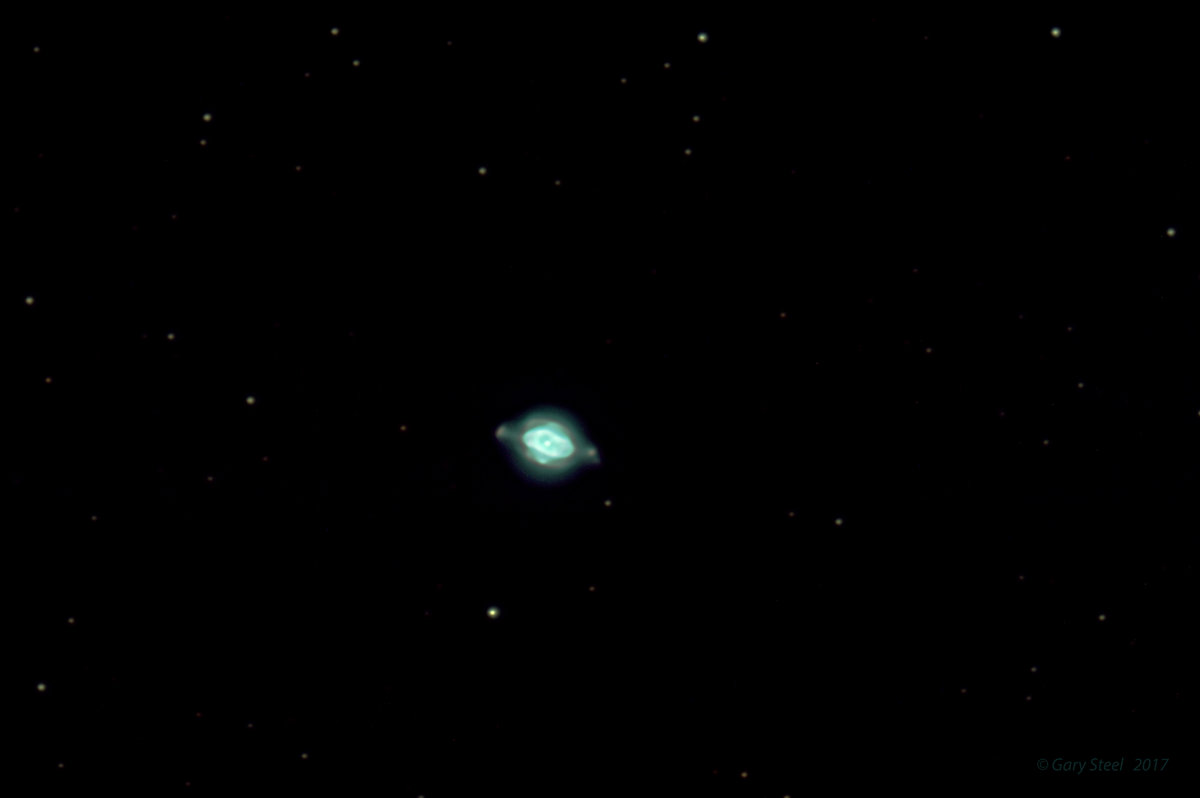This wee object is a bit of a challenge to capture & process, but worth the effort. Planetary nebulae typically subtend a very small visual angle; this one is no exception at approximately 30 x 24 arcseconds. The Saturn Nebula sports some very clear ansae (the two bright knots in the 'rings') and a very pretty blue-green halo that suggests ionised oxygen. Aller's (1961) spectrograph seems to confirm this (Kaler, 1997). It is no great surprise, given the quality of optics at that time, that Lorde Rosse (~1848) thought that it might be a planet similar to Saturn, and thus gave it its current name. We now know that that its core is a very hot, collapsed star, surrounded by an envelope of gas that was pushed out by stellar wind after the collapse. The distance to NGC 7009 is, apparently, difficult to determine; some estimates state it being as close as 1400 ly, while others suggest it is up to 4000 ly away.

Date: 24 August 2017
Constellation: Aquarius
R.A.: 21h 04m 12s
Dec.: -11° 22' 13"
Photo stuff: 93 subs @ 180s ea.; ISO 800; Canon 60Da on Meade RCX400 16" f/8
